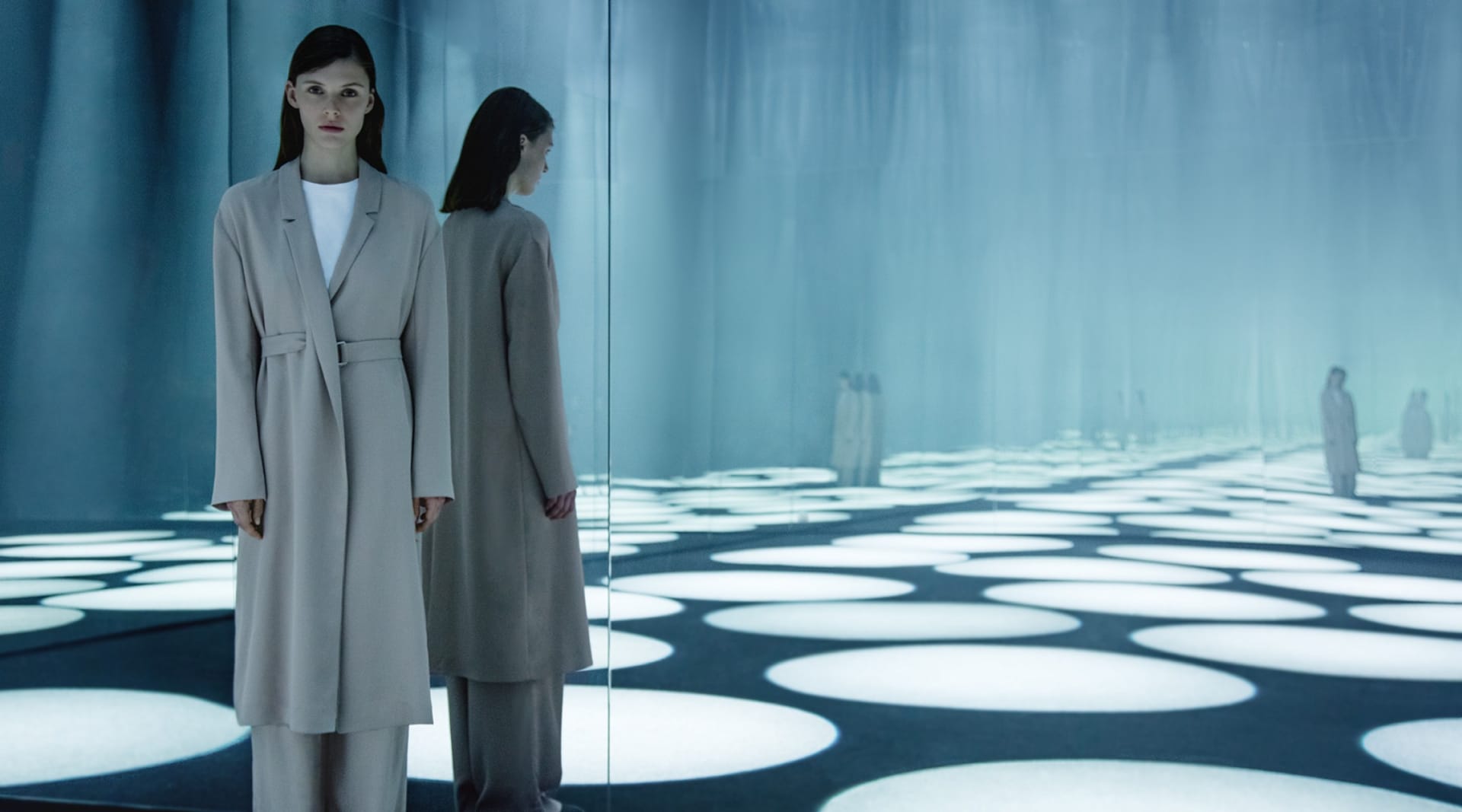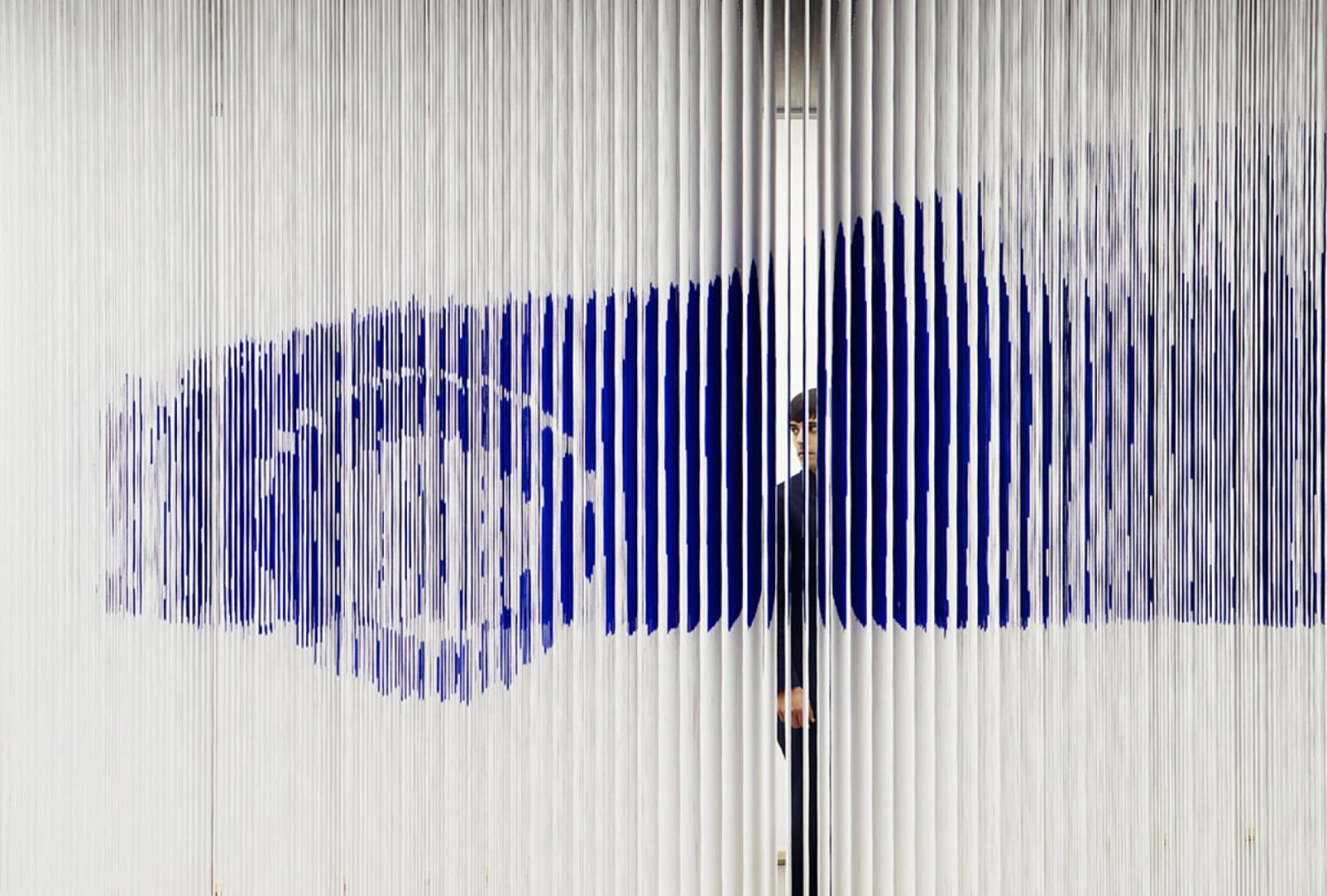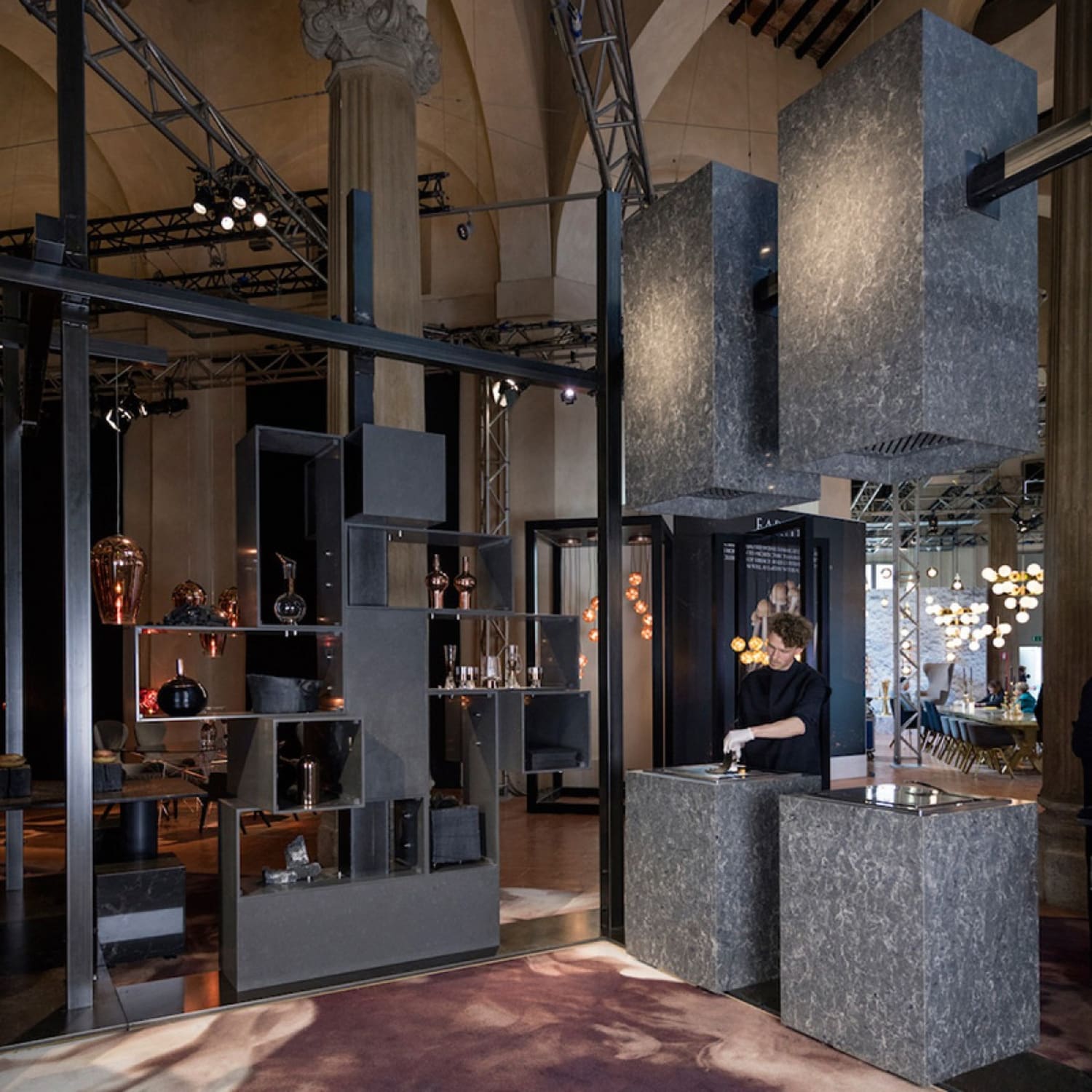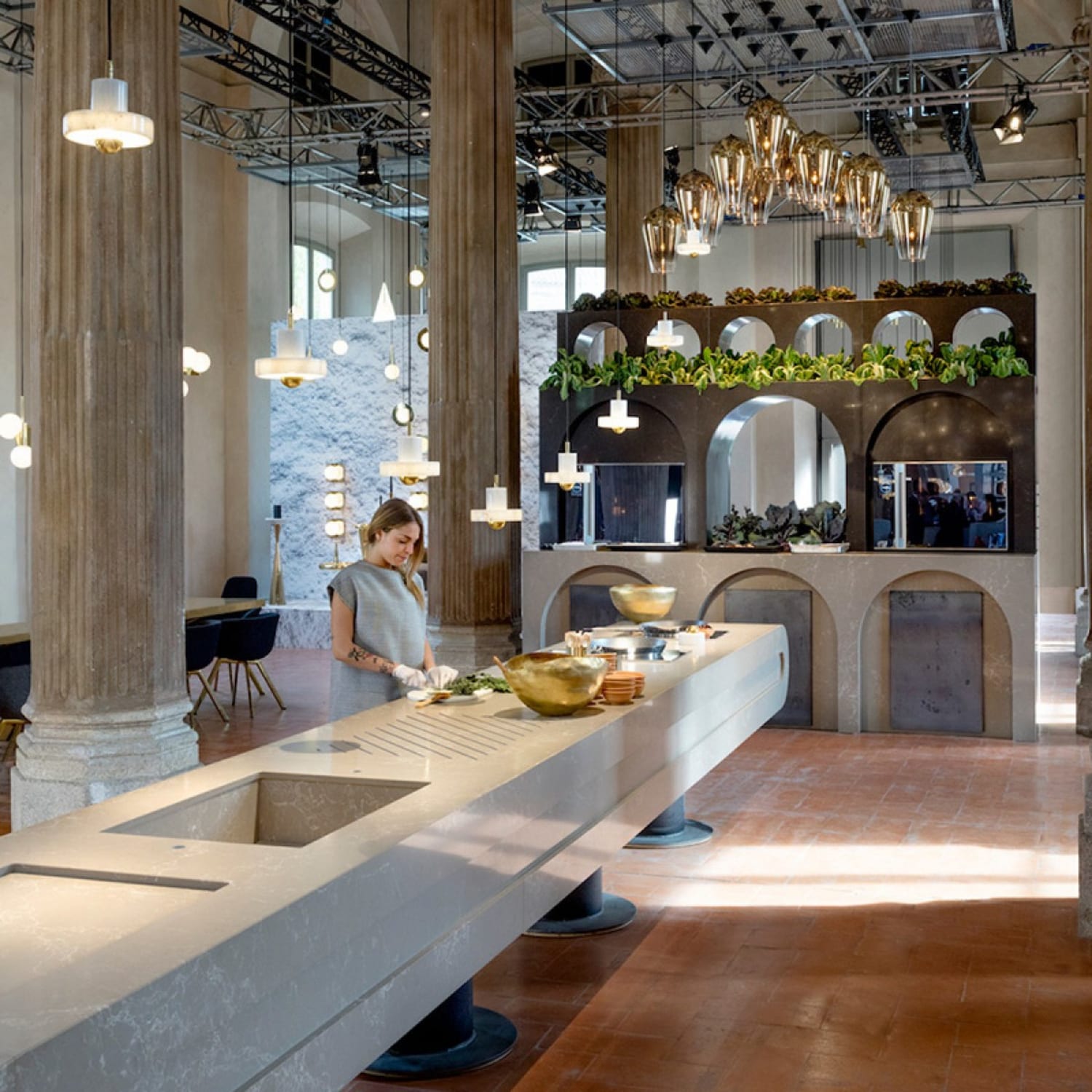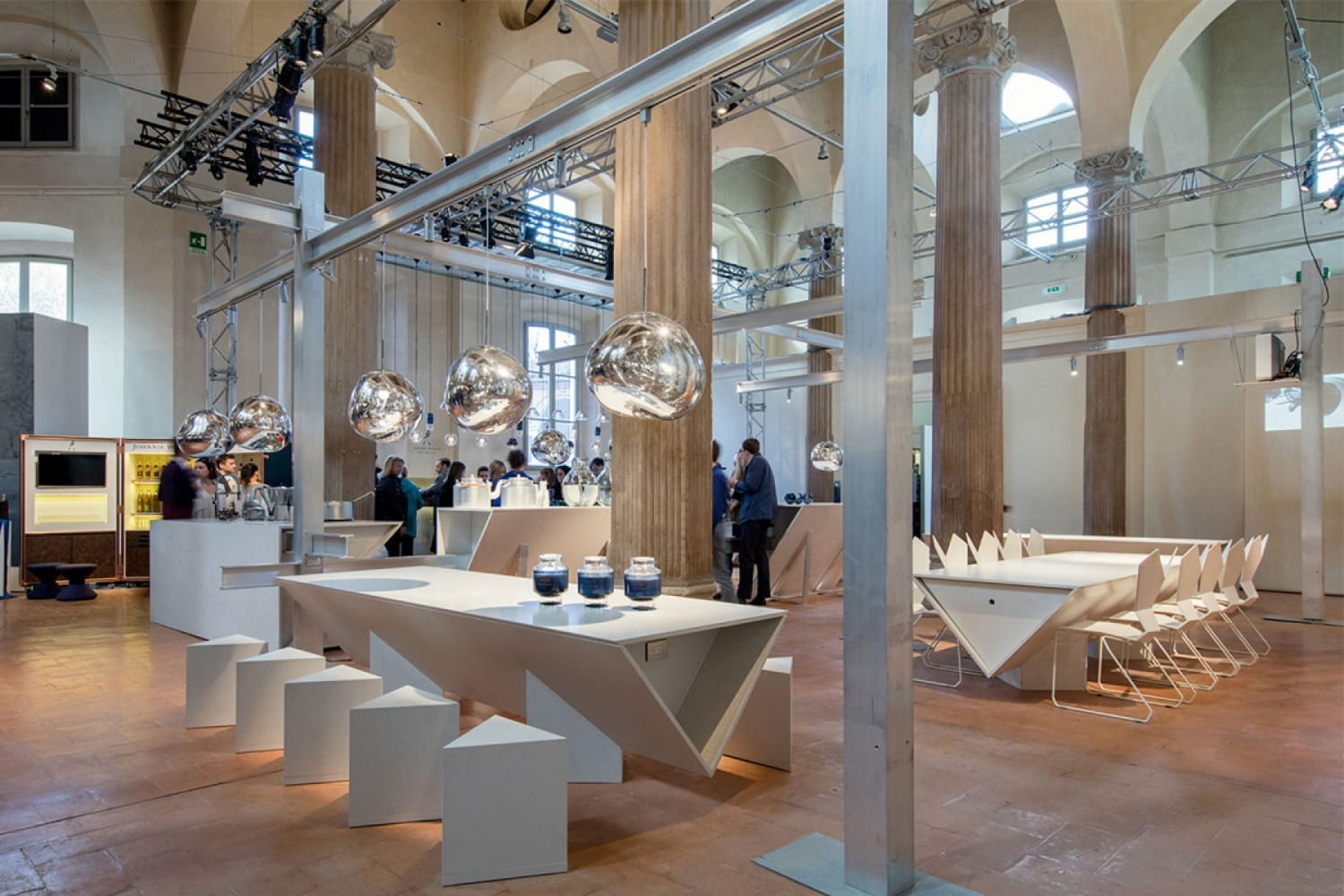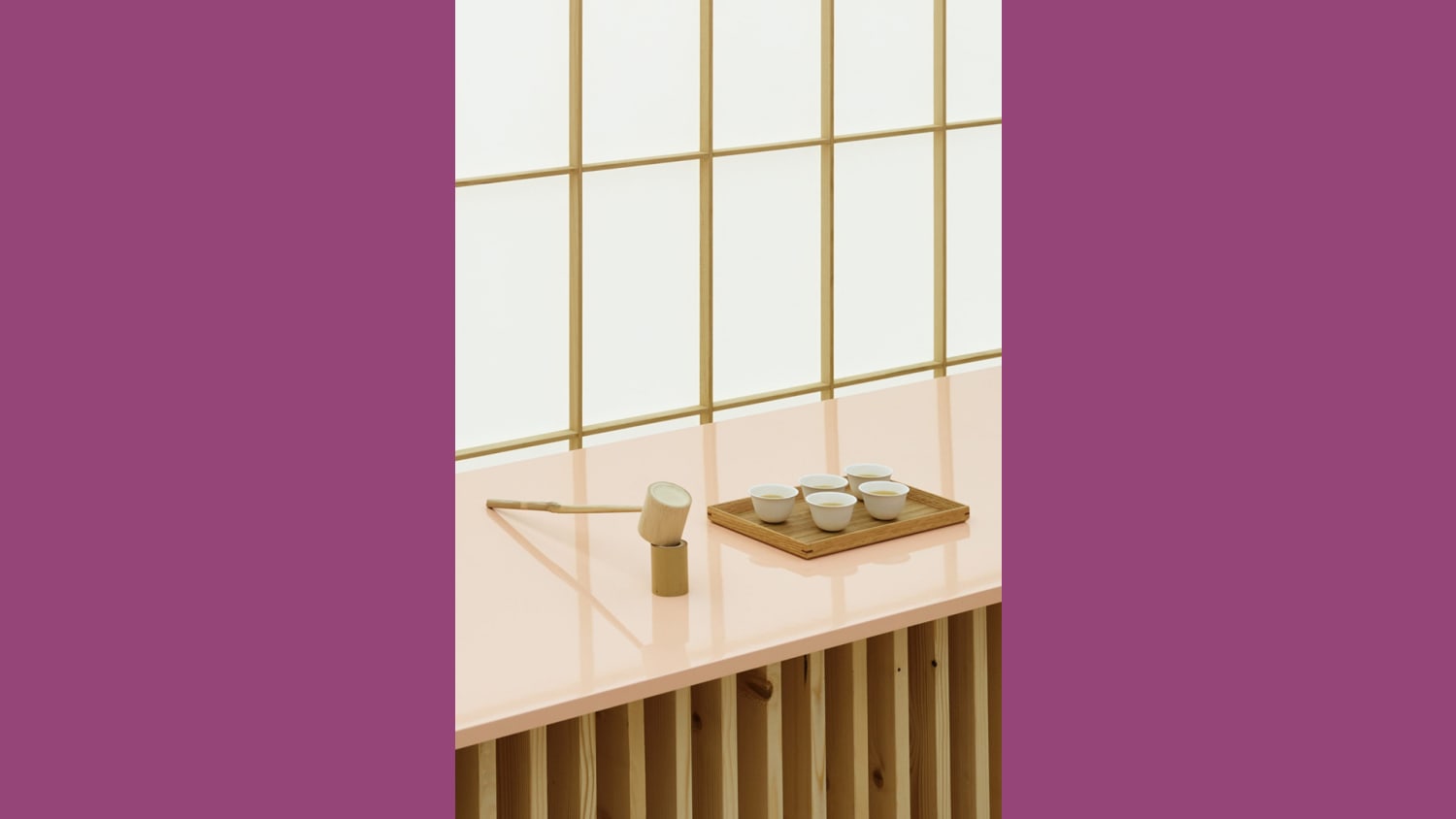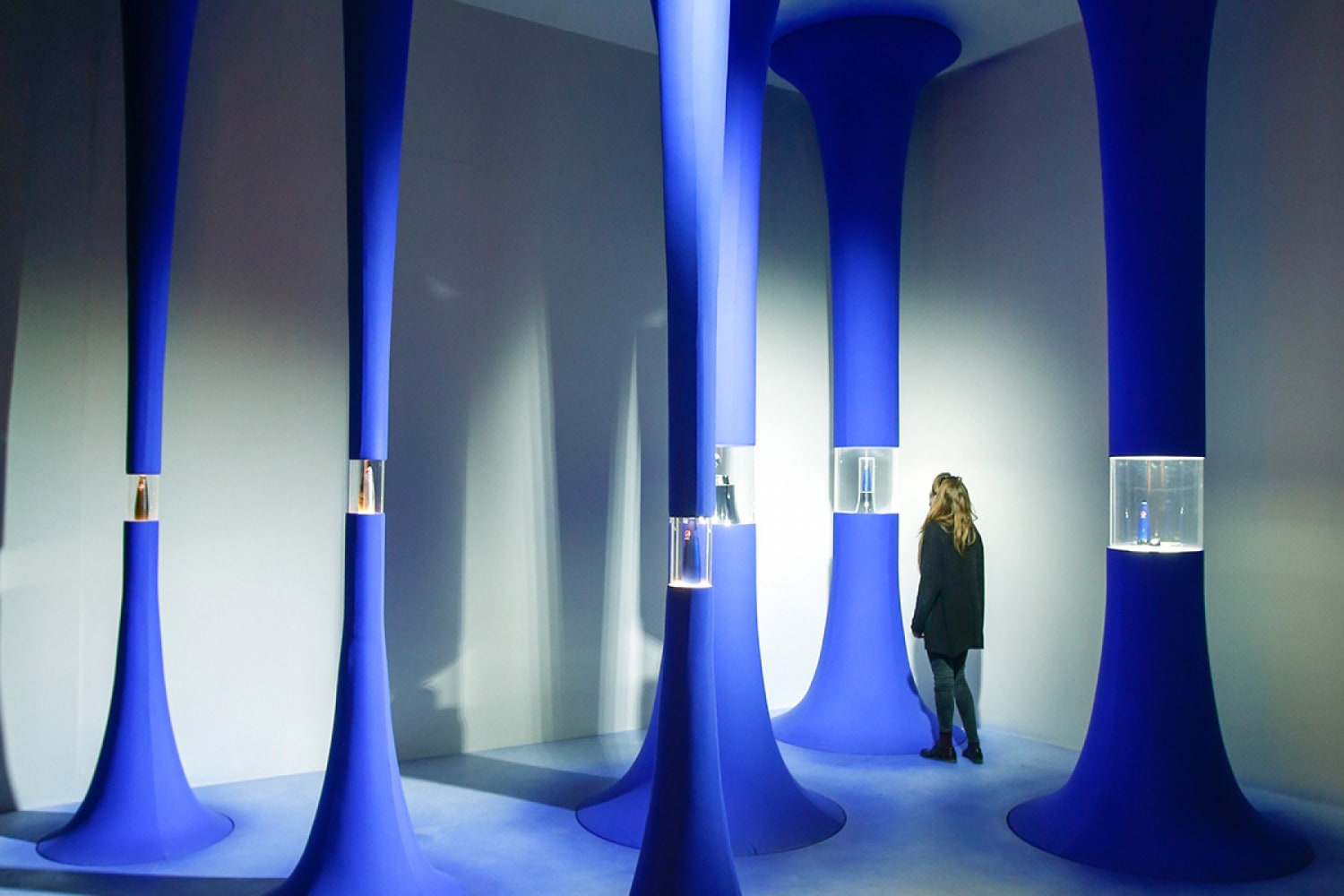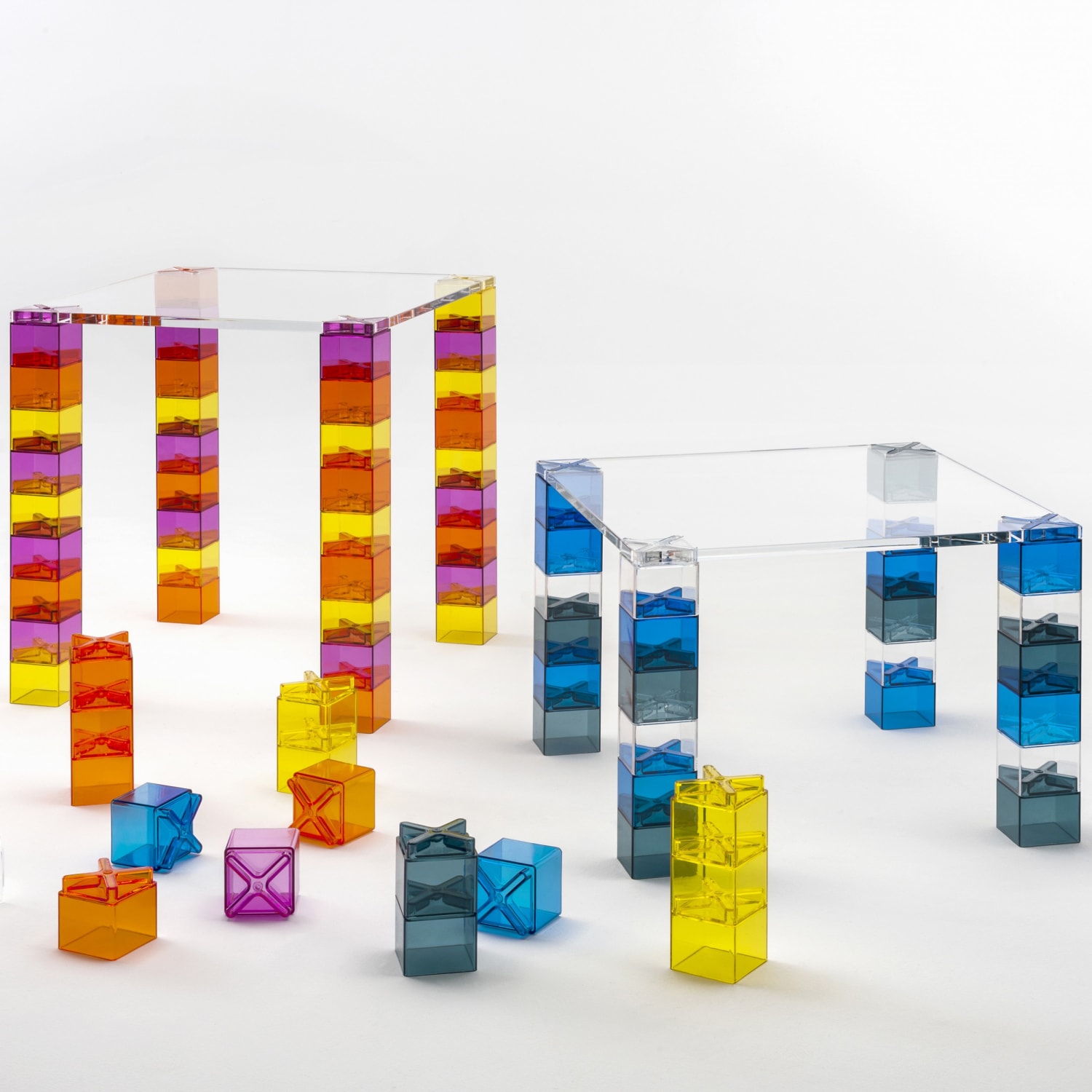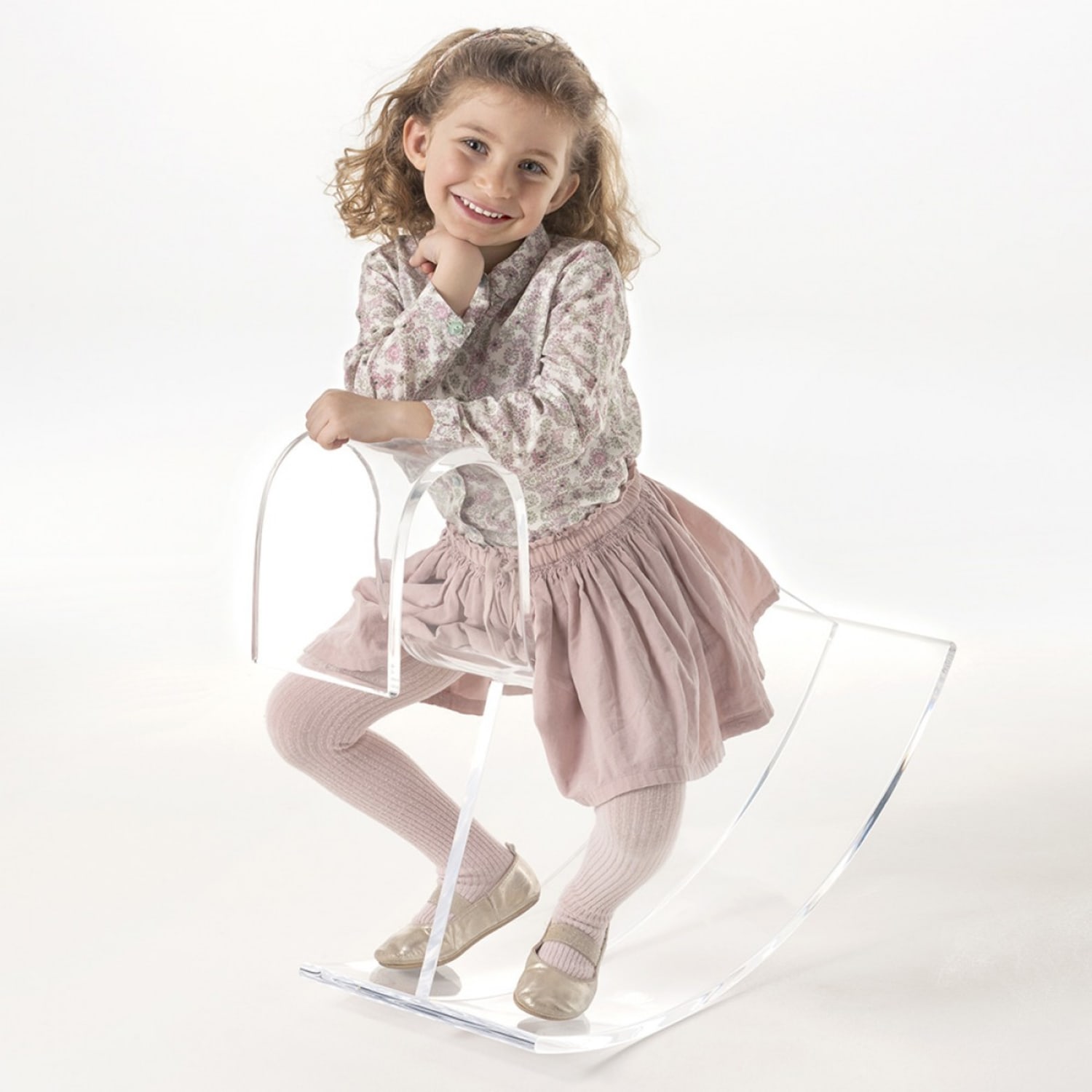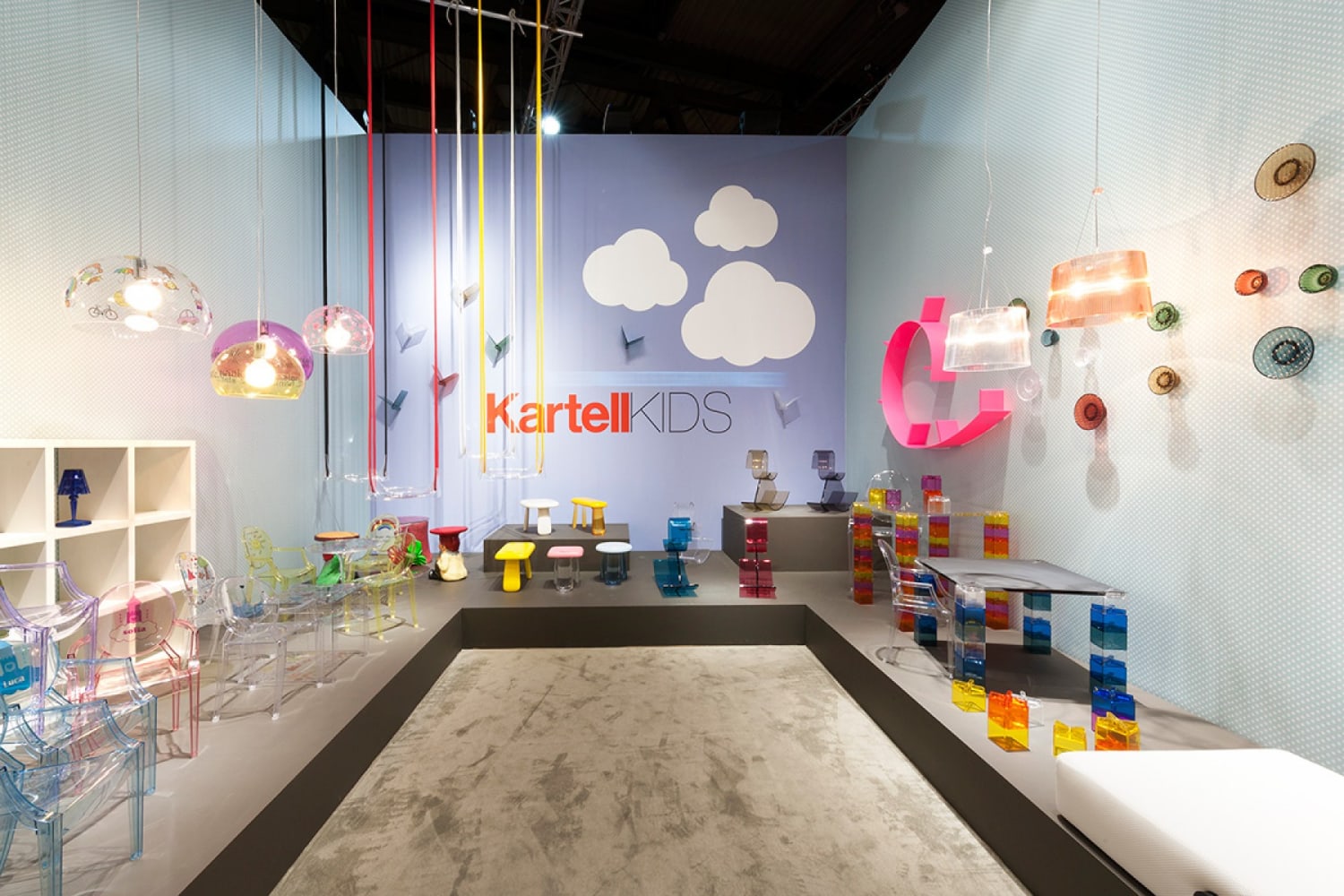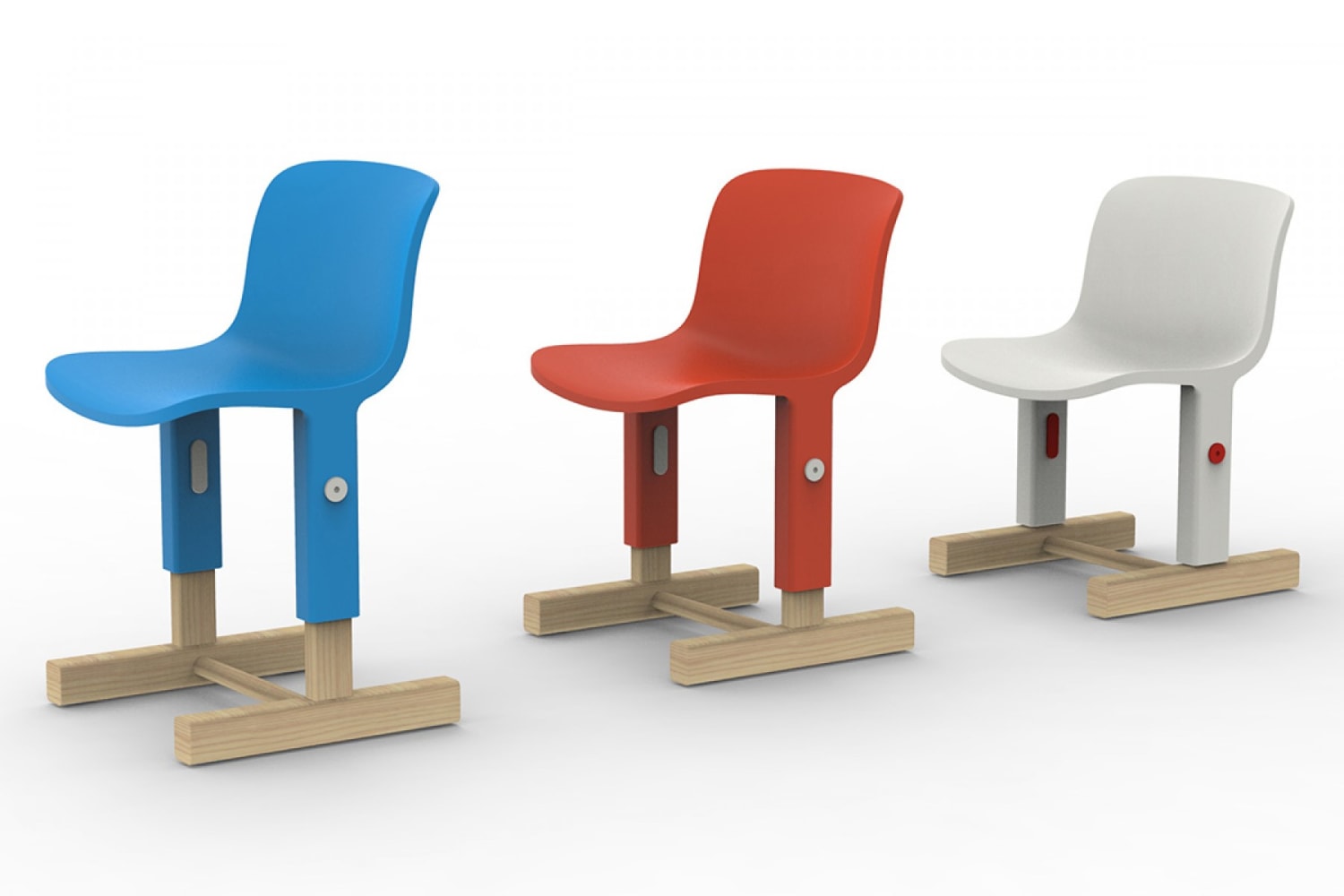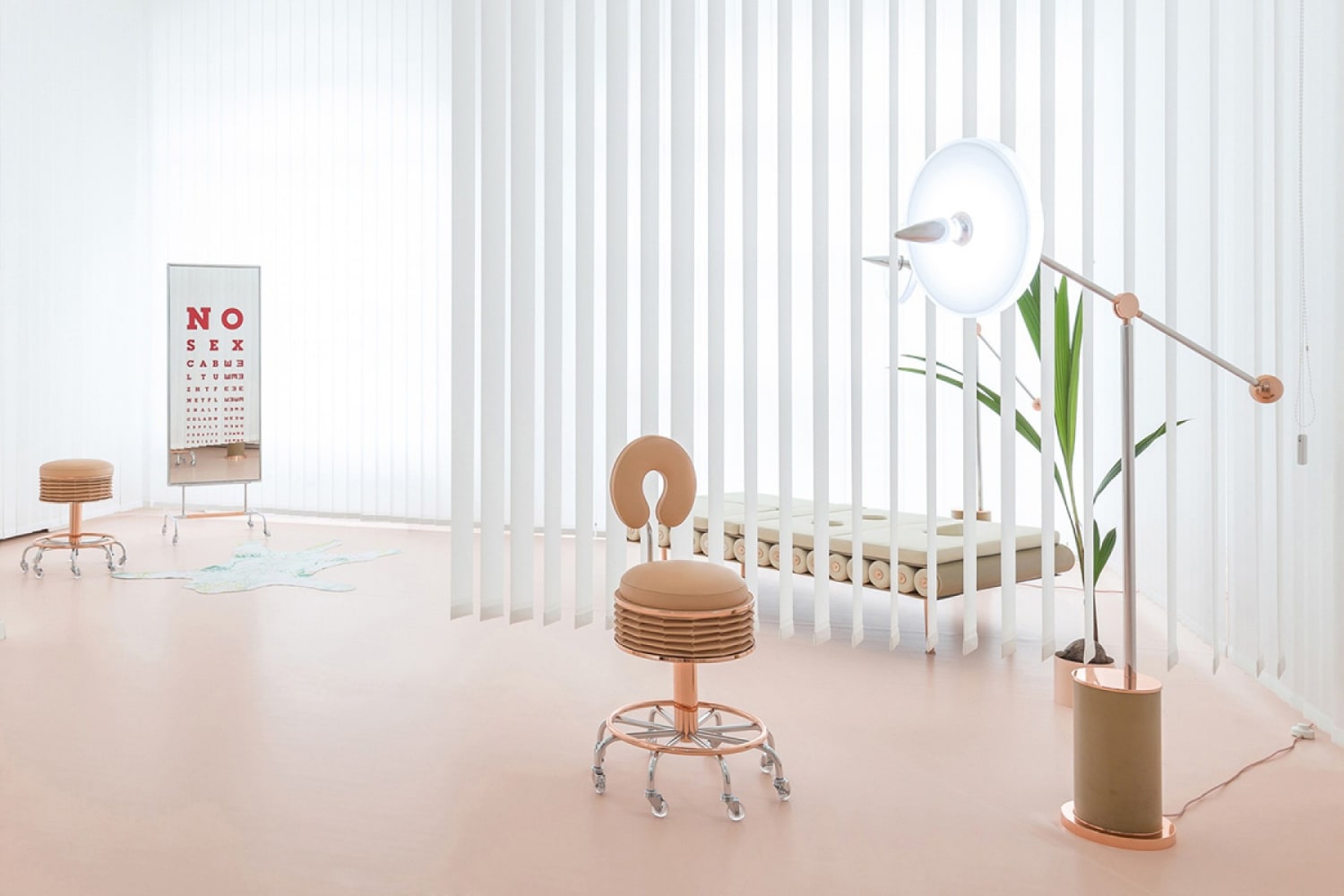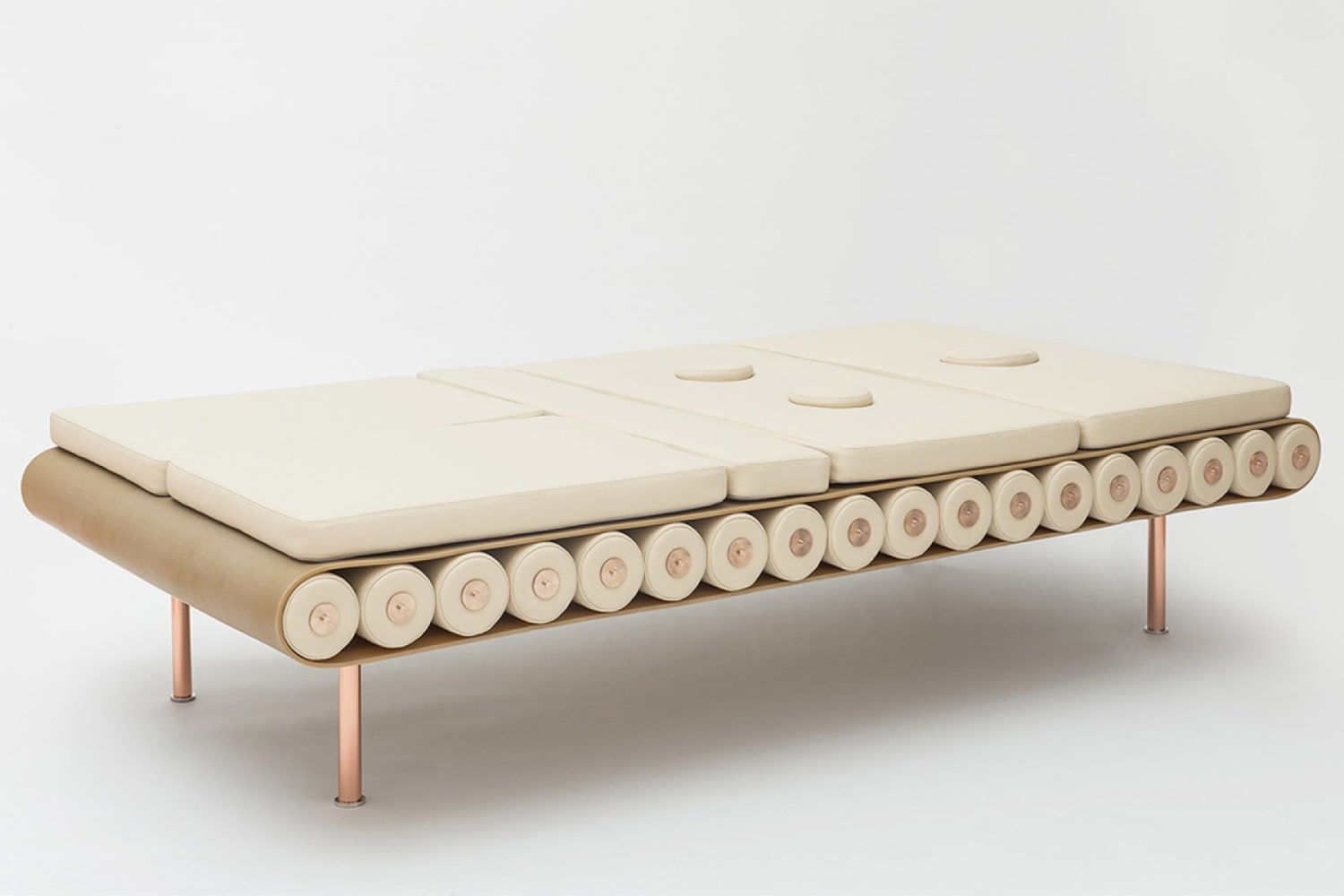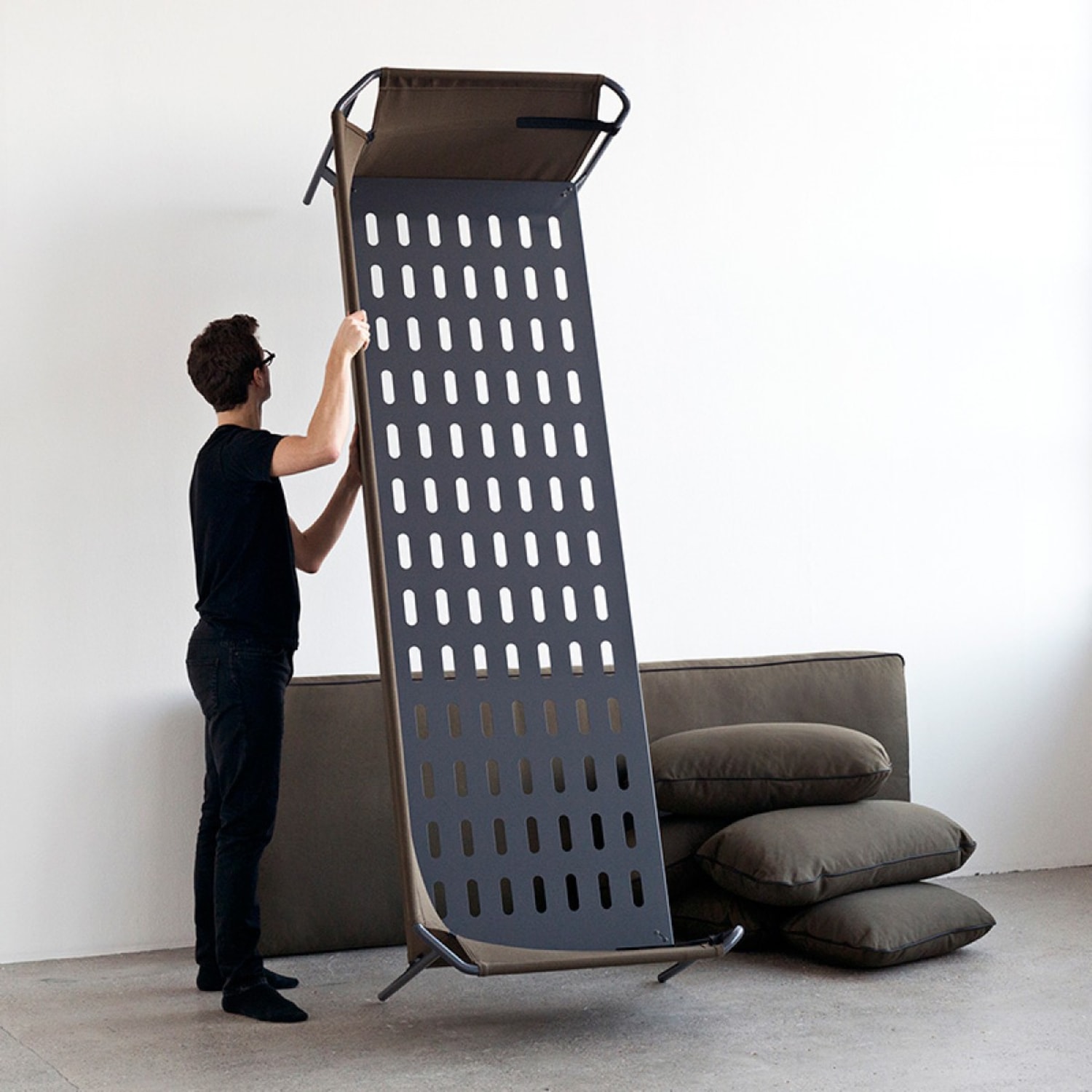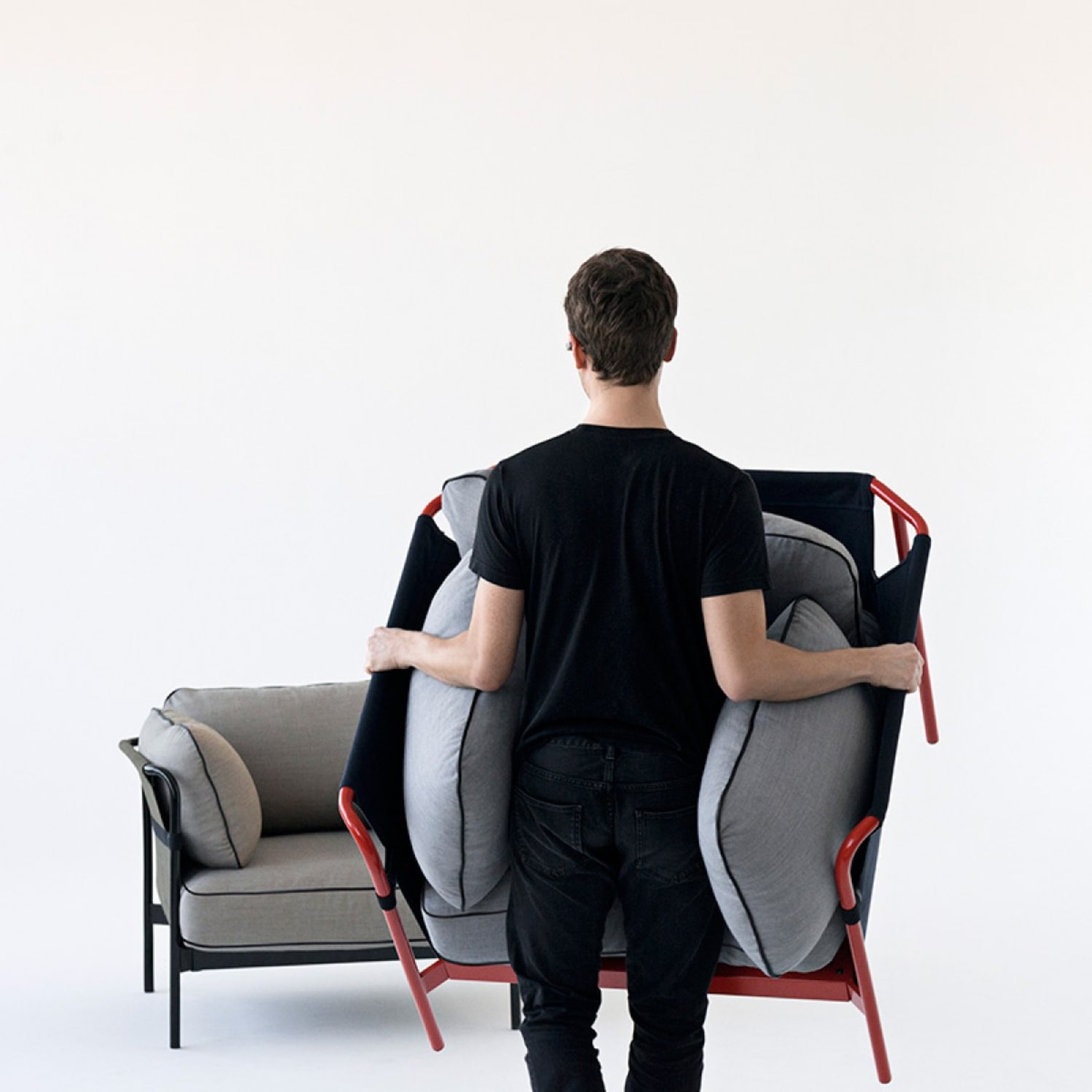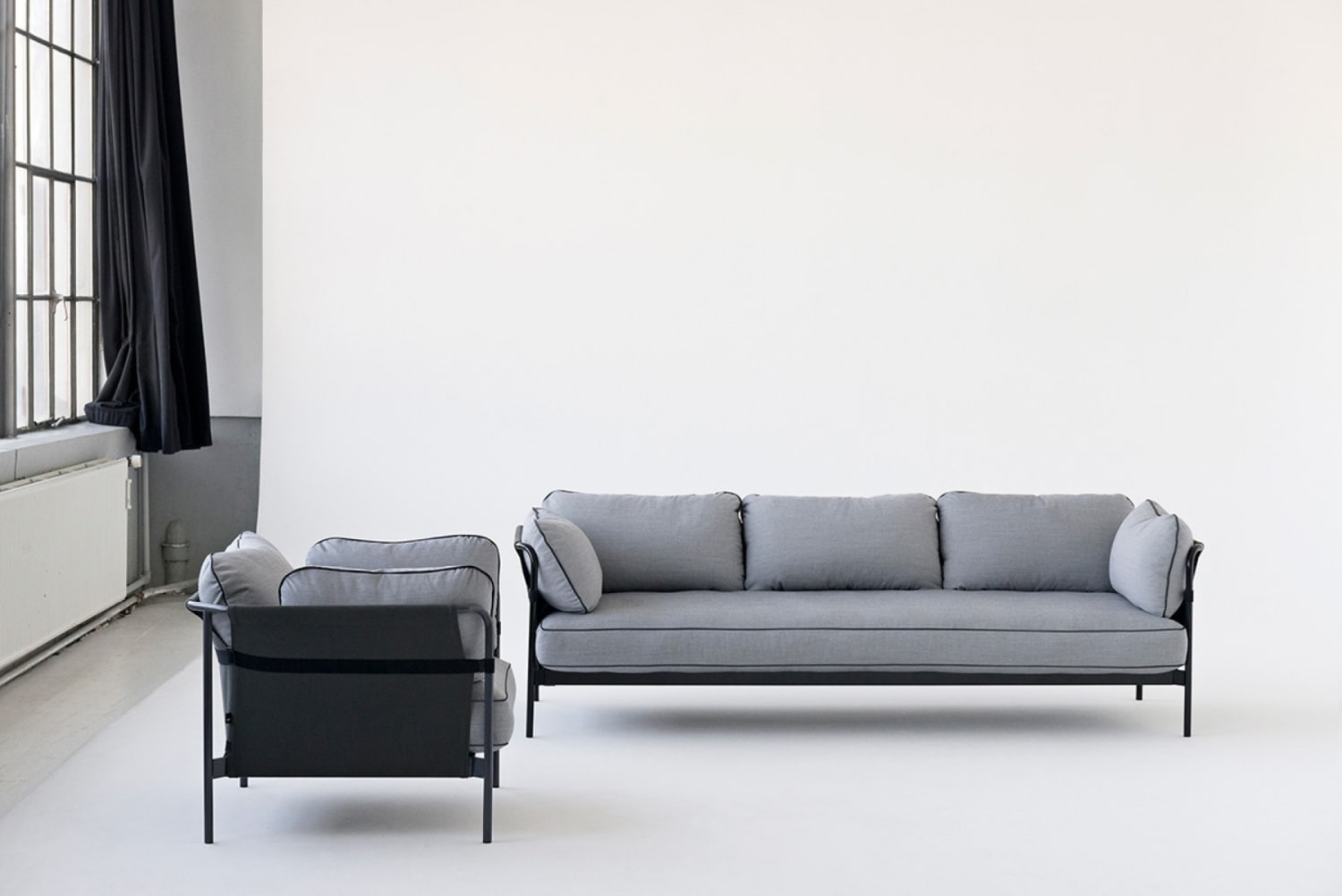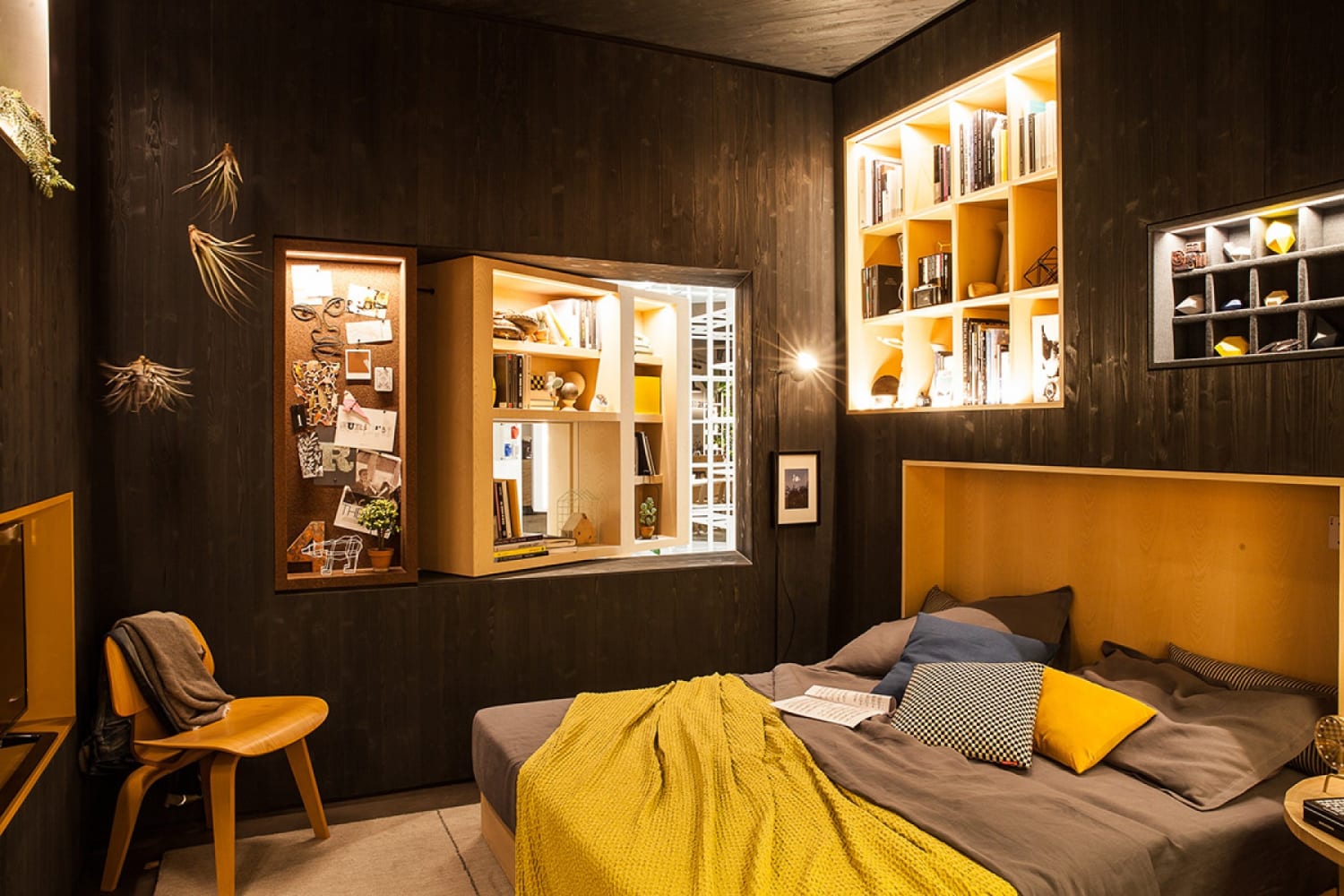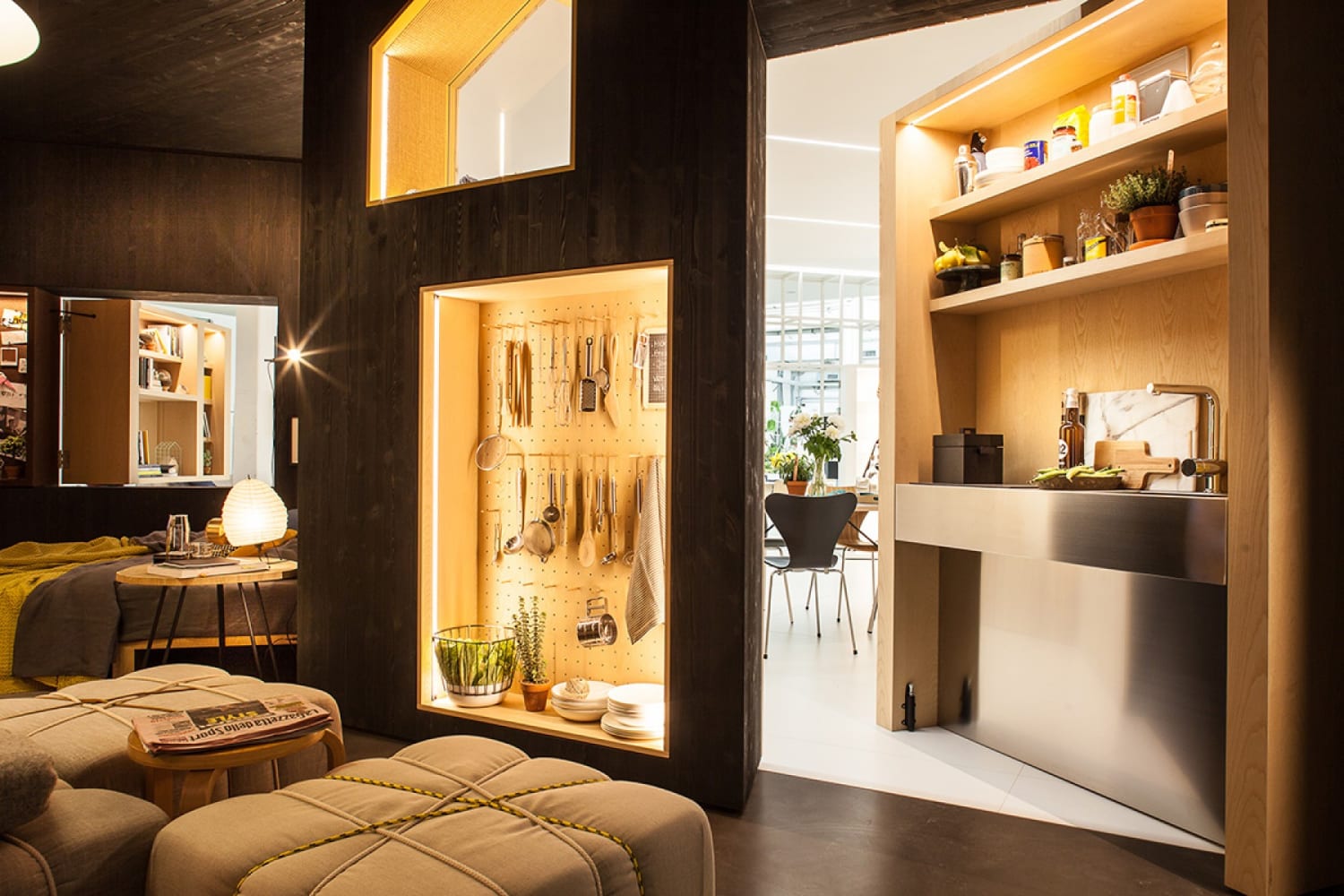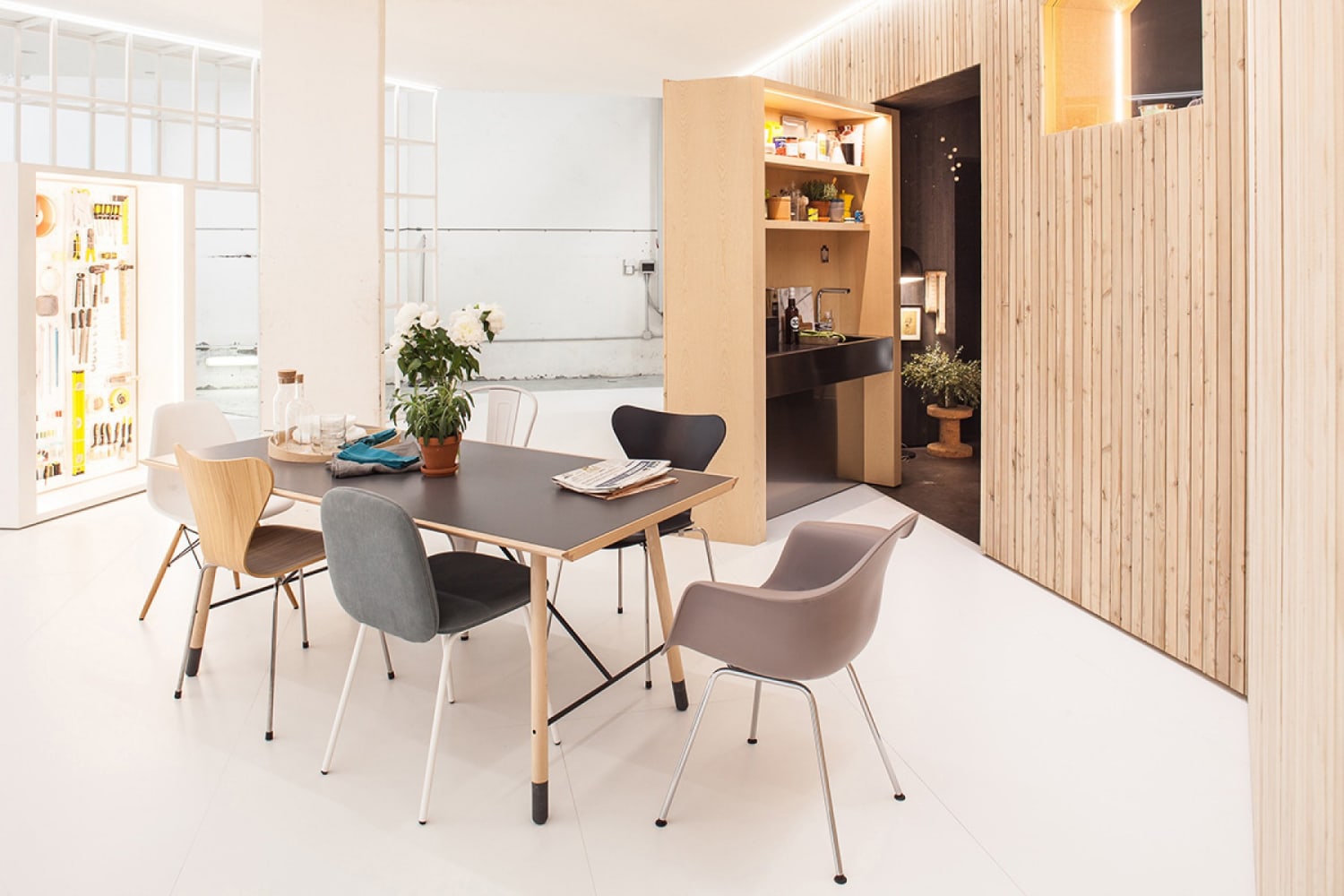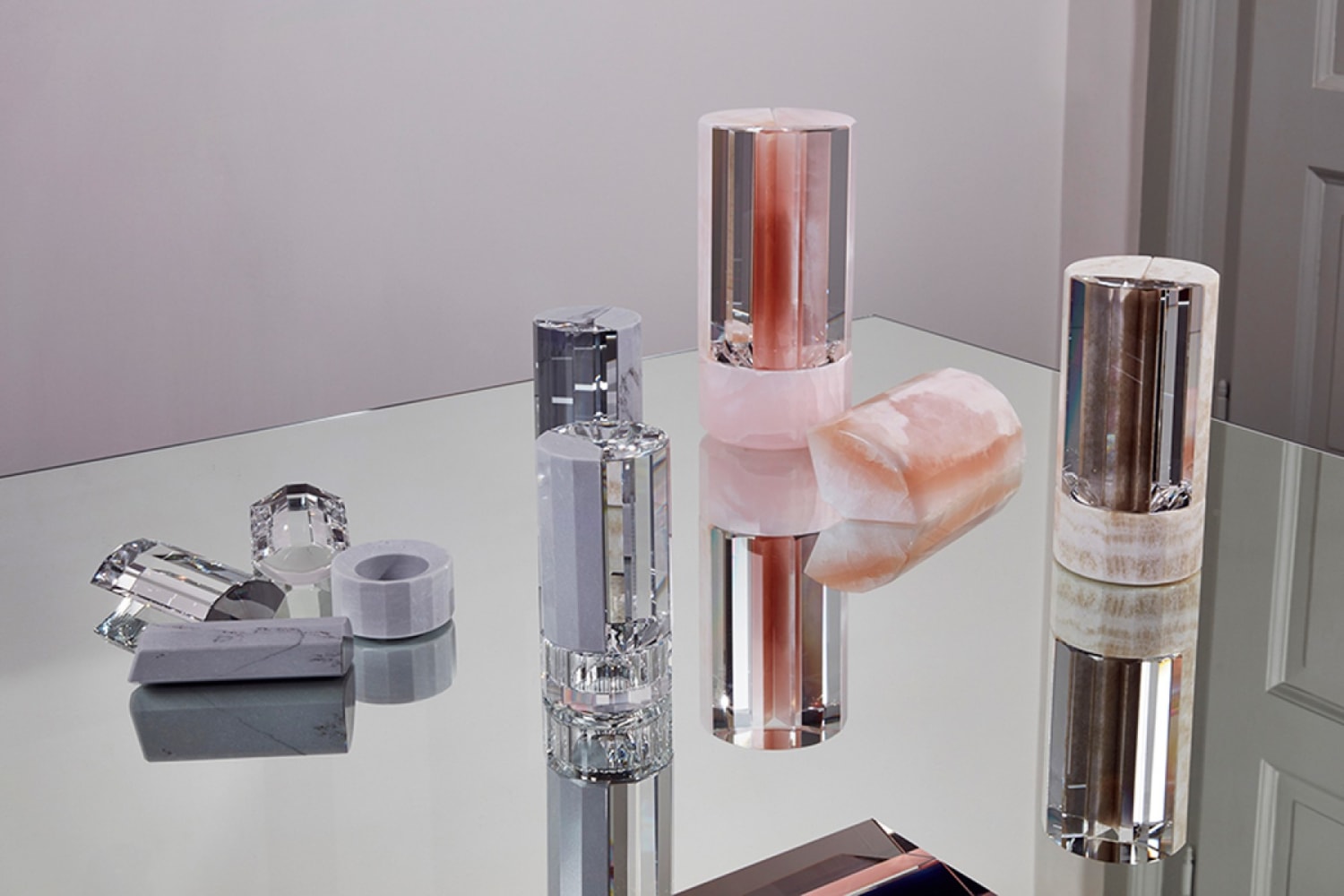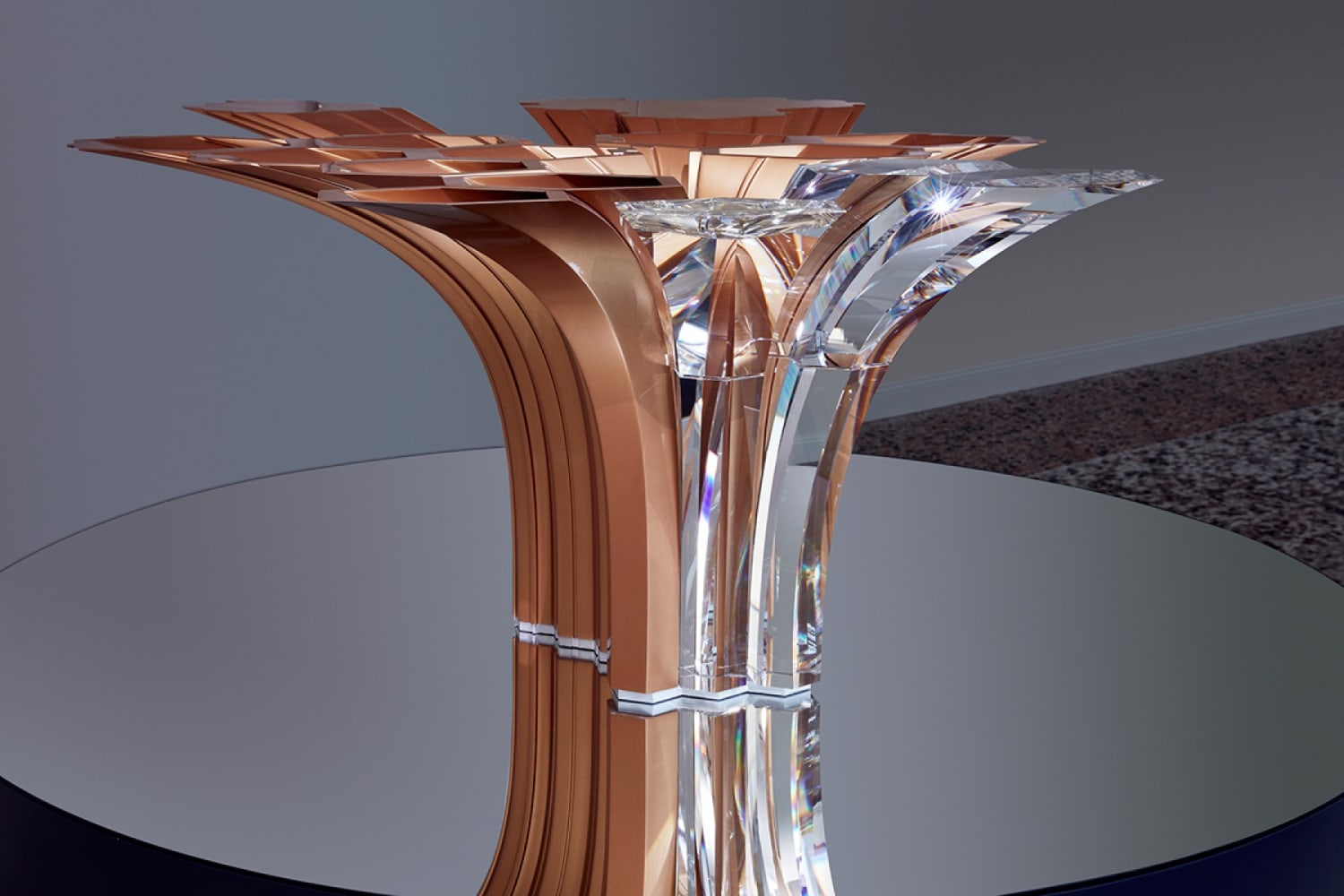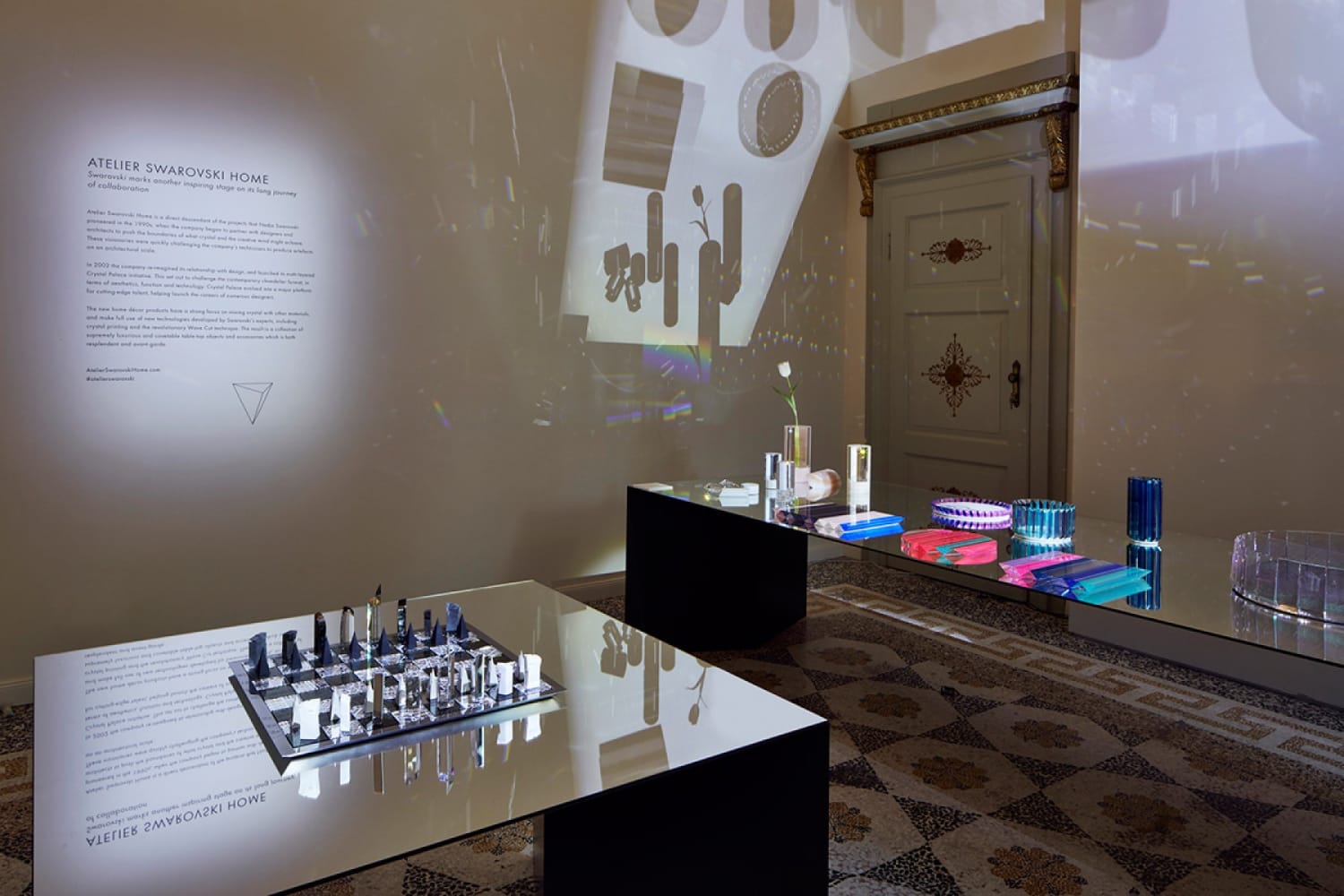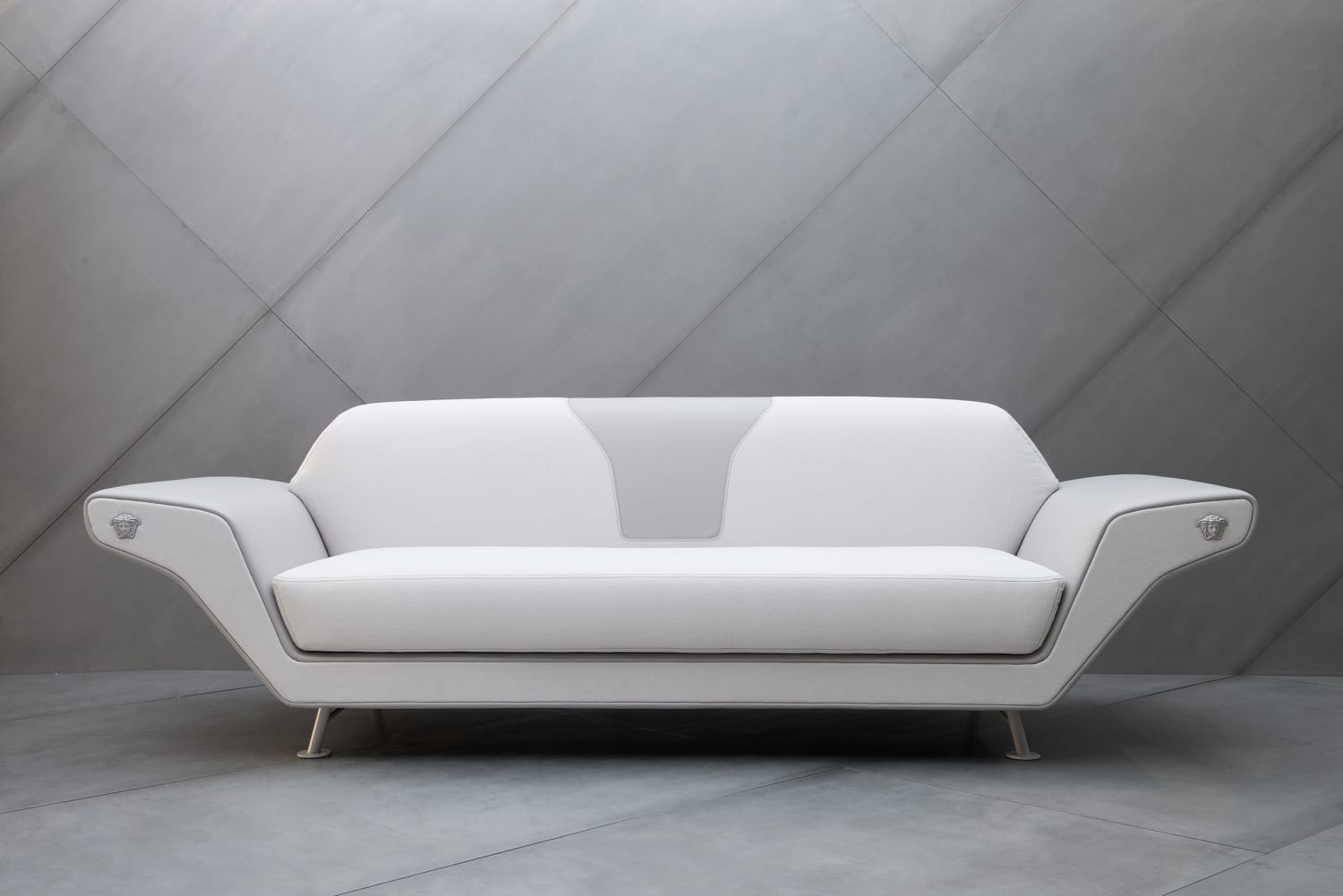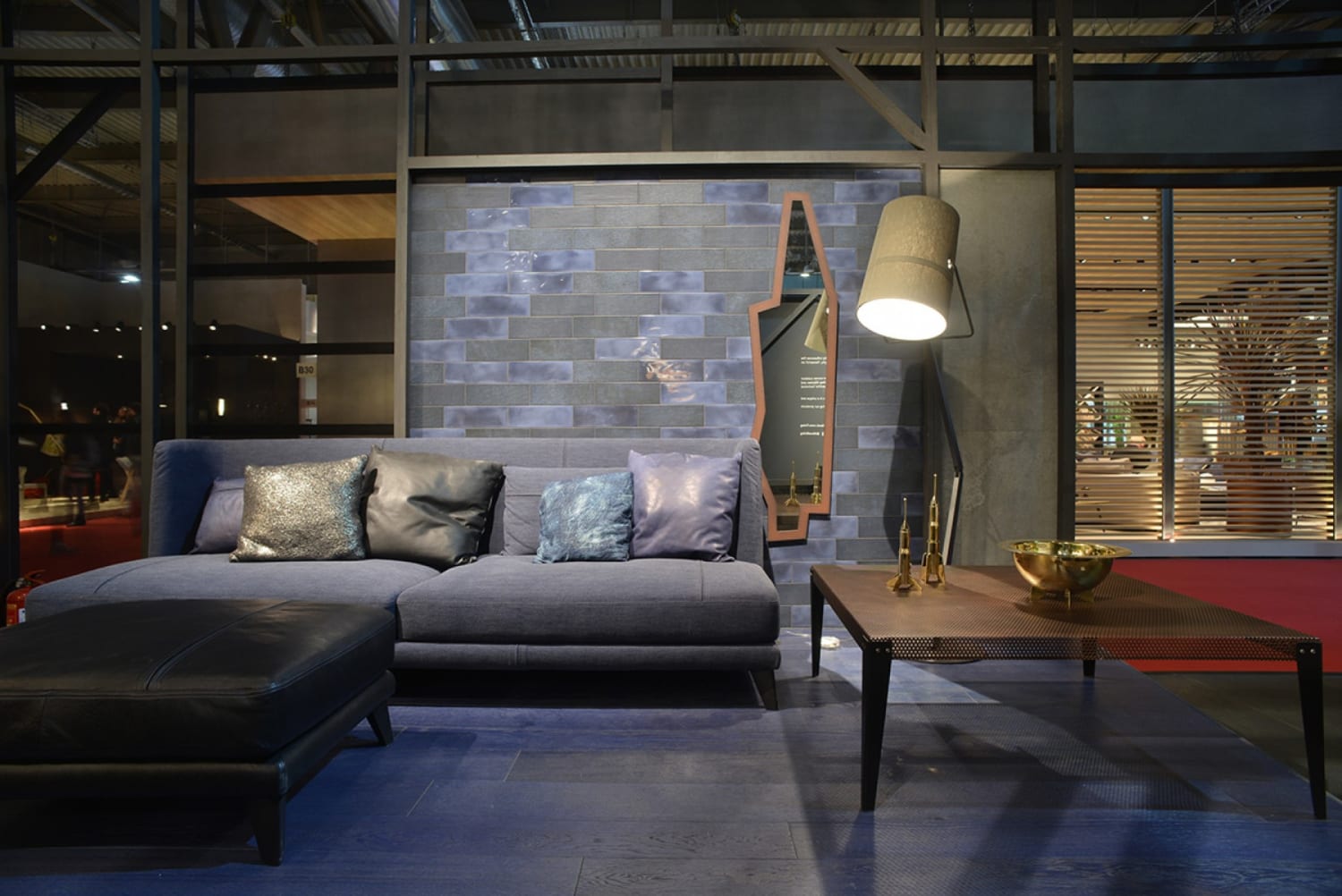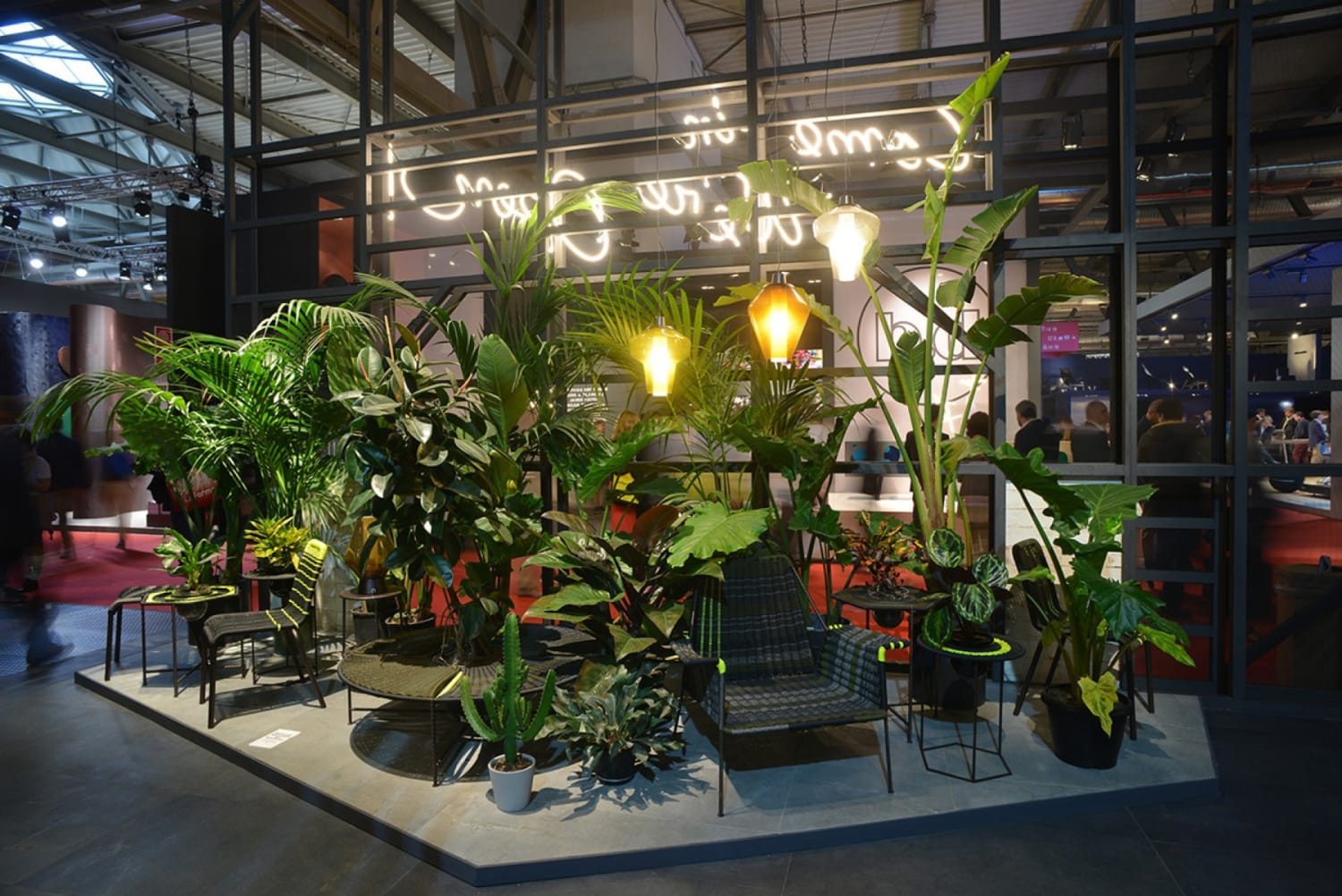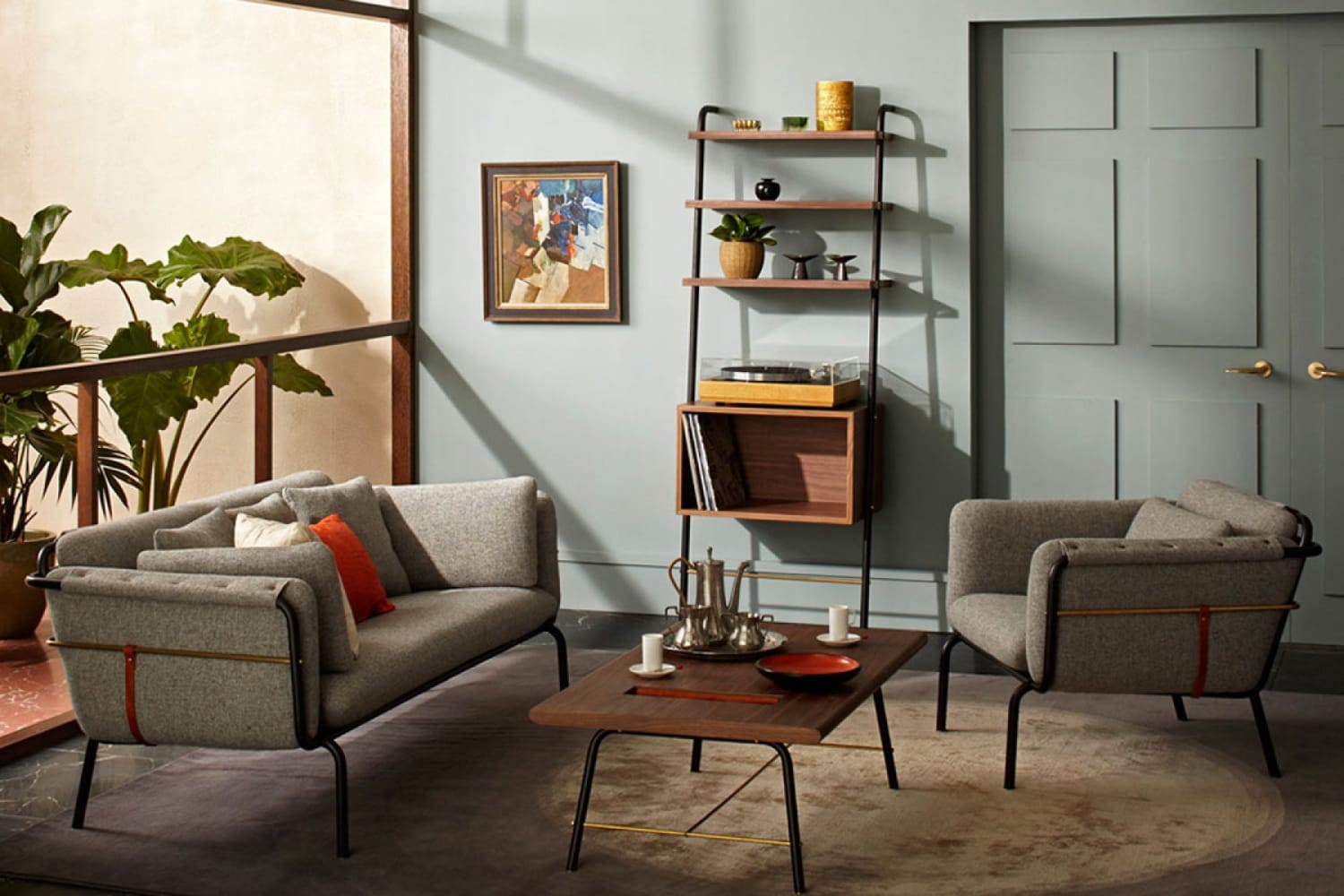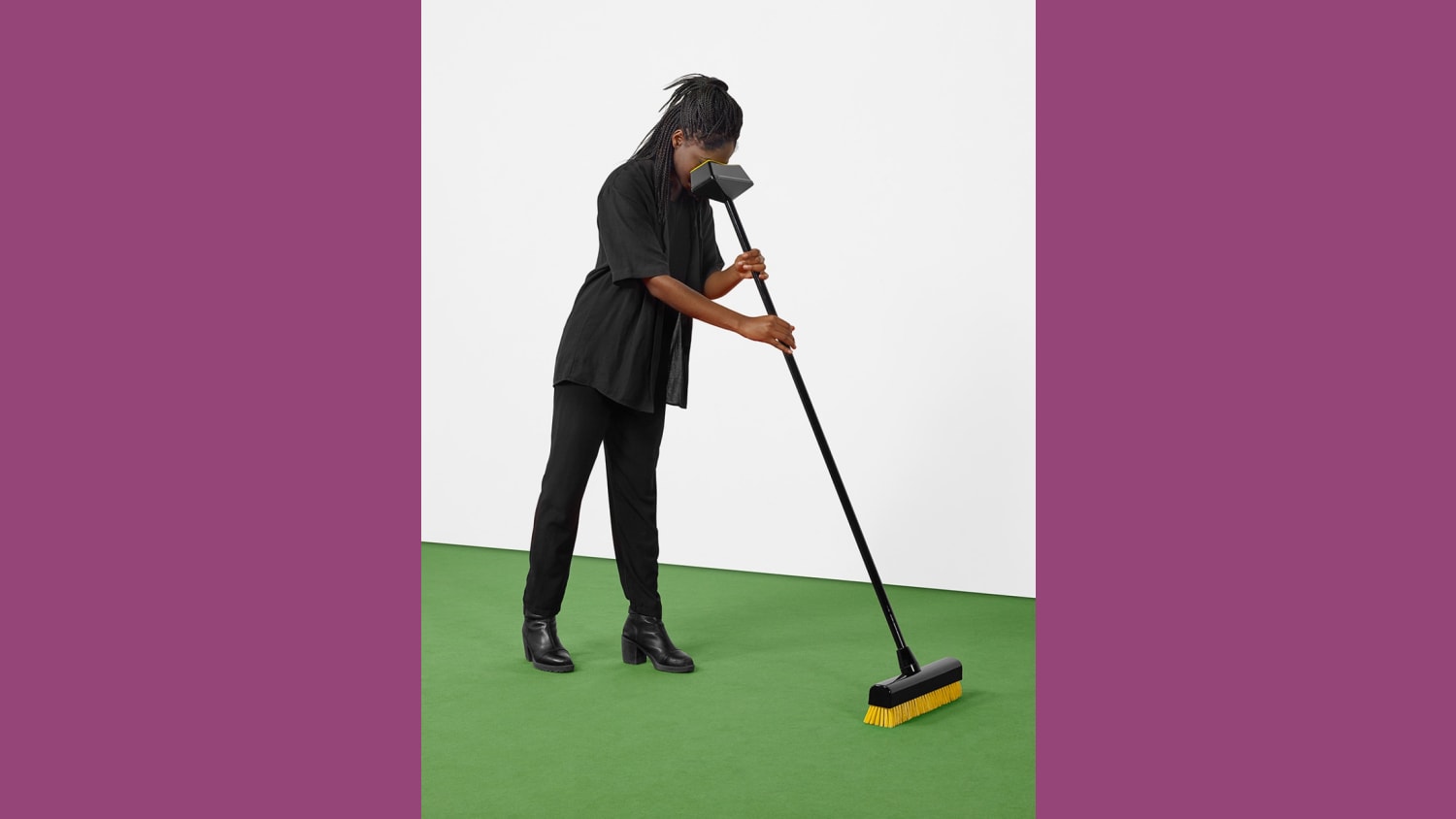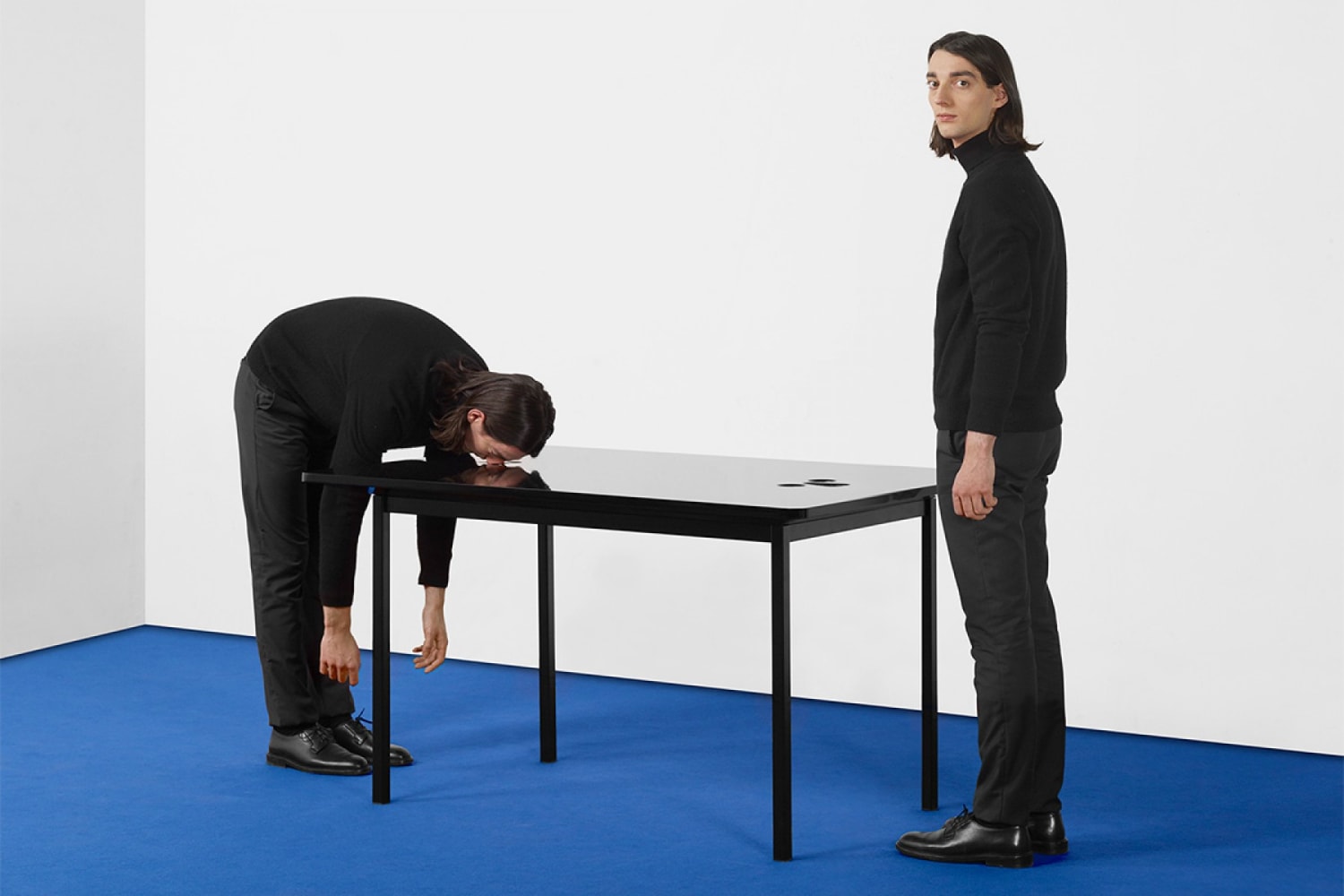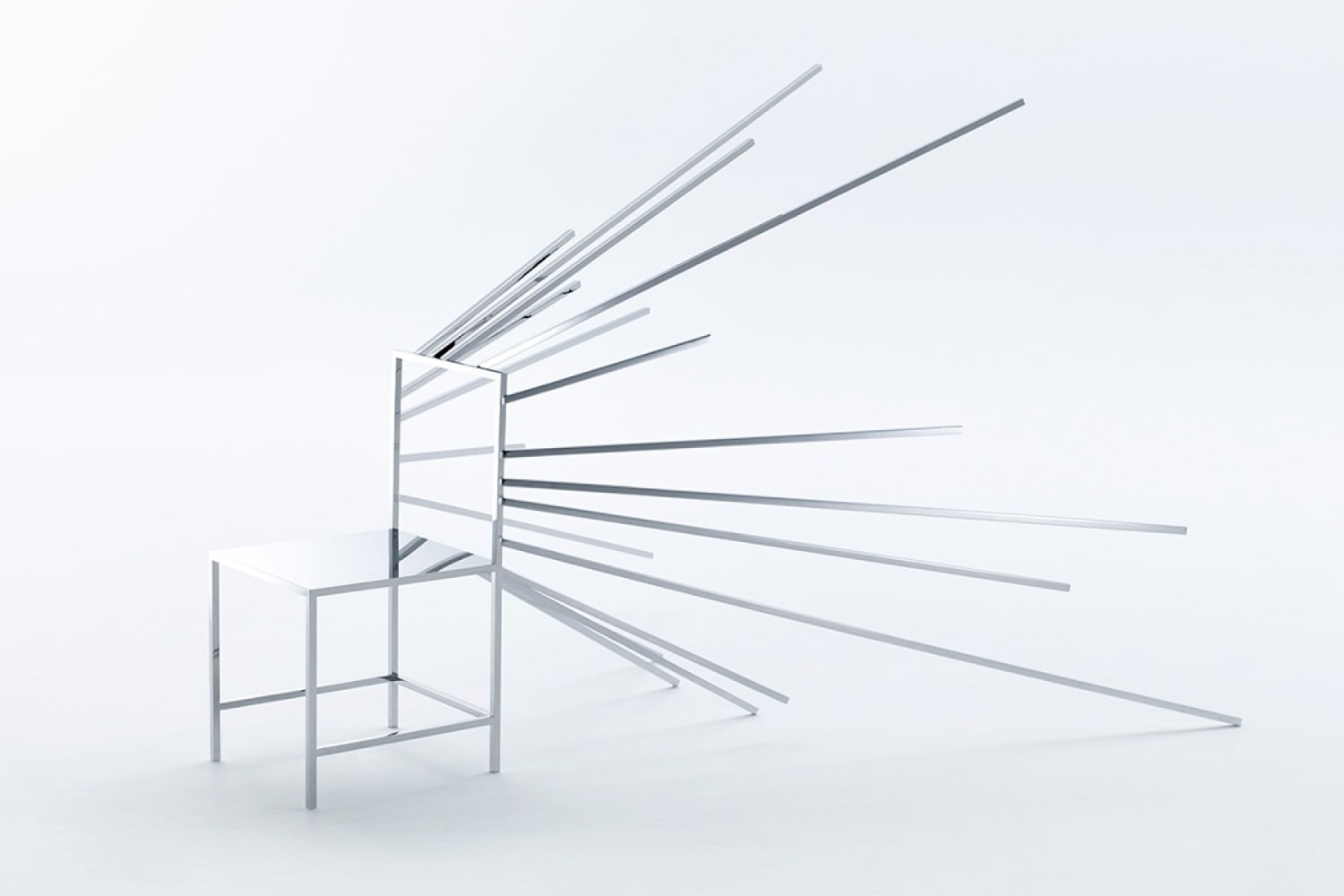East of the city, quartz manufacturer Caesarstone partnered with designer Tom Dixon and food design studio Arabeschi di Latte to create The Restaurant. It consisted of four deconstructed kitchens made from Caesarstone quartz, with menus based on the four elements: earth, fire, water and air. “We decided to avoid a show of products for Milan this year,” said Tom Dixon. “Instead, we wanted to bring people together to this restaurant to sit and eat in the design landscape.” (See our full story here.)
Elsewhere in the city, Airbnb took over Ristorante Marta for Makers & Bakers, an installation that focused on the rituals around a meal. The warm and homely setting was filled with product designs commissioned by curator Ambra Medda, and a table full of continually replenished food, which included a selection of cold cut meats, cheeses and loaves of bread. “Airbnb believes in the universality of food and design, and their ability to create community through a common language,” Joe Gebbia, co-founder of Airbnb, said in a release.
